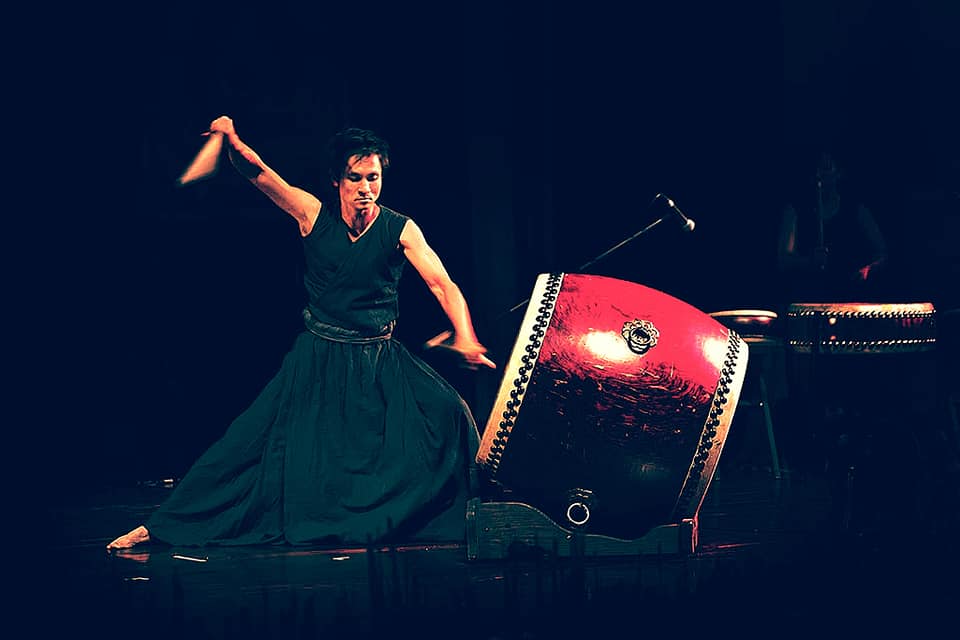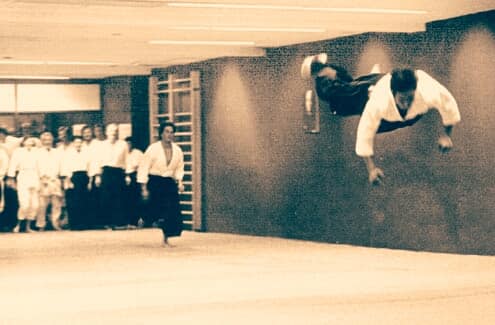In addition to the instruments, the term taiko also refers to the performance itself, and commonly to one style called kumi-daiko, or ensemble-style playing (as opposed to festival performances, rituals, or theatrical use of the drums).Kumi-daiko was developed by Daihachi Oguchi in 1951. He is considered a master performer and helped transform taiko performance from its roots in traditional settings in festivals and shrines. Oguchi was trained as a jazz musician in Nagano, and at one point, a relative gave him an old piece of written taiko music.
Unable to read the traditional and esoteric notation, Oguchi found help to transcribe the piece, and on his own added rhythms and transformed the work to accommodate multiple taiko players on different-sized instruments.Each instrument served a specific purpose that established present-day conventions in kumi-daiko performance.
Oguchi’s ensemble, Osuwa Daiko, incorporated these alterations and other drums into their performances. They also devised novel pieces that were intended for non-religious performances. Several other groups emerged in Japan through the 1950s and 1960s. Oedo Sukeroku Daiko was formed in Tokyo in 1959 under Seidō Kobayashi, and has been referred to as the first taiko group who toured professionally. Globally, kumi-daiko performance became more visible during the 1964 Summer Olympics in Tokyo, when it was featured during the Festival of Arts event.

Kumi-daiko was also developed through the leadership of Den Tagayasu (田耕, Den Tagayasu), who gathered young men who were willing to devote their entire lifestyle to taiko playing and took them to Sado Island for training where Den and his family had settled in 1968. Den chose the island based on a desire to reinvigorate the folk arts in Japan, particularly taiko; he became inspired by a drumming tradition unique to Sado called ondeko (鬼太鼓, “demon drumming” in Sado dialect) that required considerable strength to play well. Den called the group “Za Ondekoza” or Ondekoza for short, and implemented a rigorous set of exercises for its members including long-distance running.
In 1975, Ondekoza was the first taiko group to tour in the United States. Their first performance occurred just after the group finished running the Boston Marathon while wearing their traditional uniforms. In 1981, some members of Ondekoza split from Den and formed another group called Kodo under the leadership of Eitetsu Hayashi. Kodo continued to use Sado Island for rigorous training and communal living, and went on to popularize taiko through frequent touring and collaborations with other musical performers. Kodo is one of the most recognized taiko groups both in Japan and worldwide.
Estimates of the number of taiko groups in Japan vary up to 5000 active in Japan, but more conservative assessments place the number closer to 800 based on membership in the Nippon Taiko Foundation, the largest national organization of taiko groups. Some pieces that have emerged from early kumi-daiko groups that continue to be performed include Yatai-bayashi from Ondekoza, Isami-goma (勇み駒, “galloping horse”) from Osuwa Daiko, and Zoku (族, “tribe”) from Kodo.
Source: Facebook/aikido



